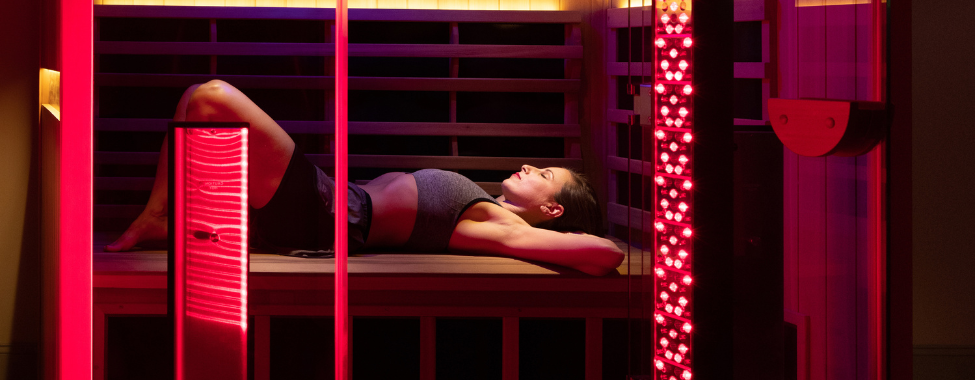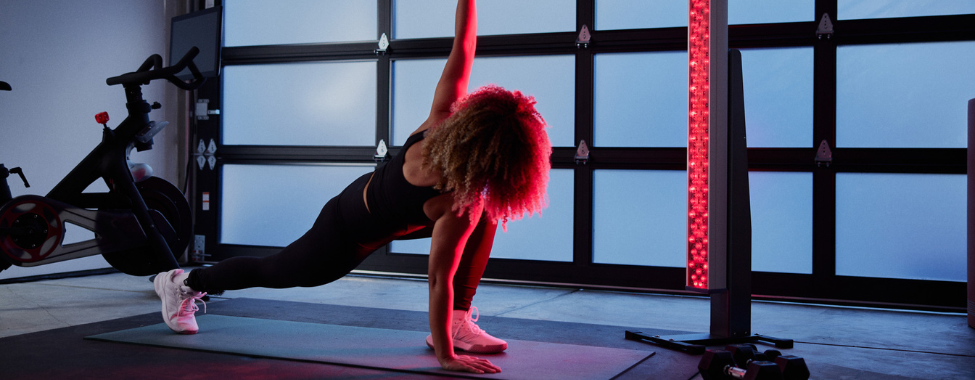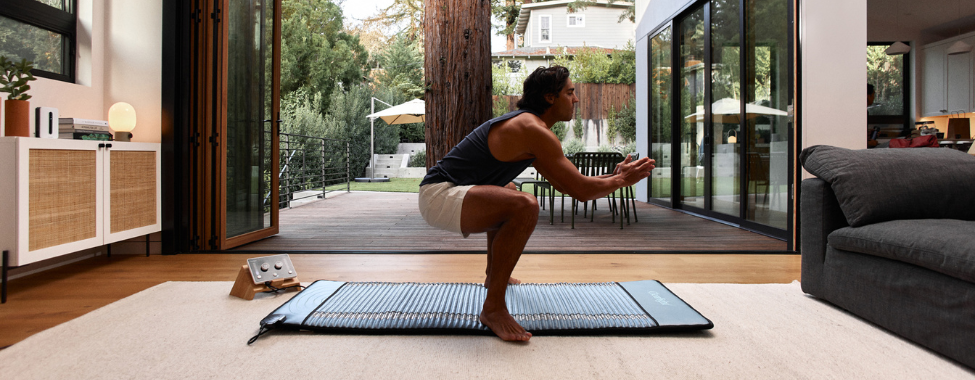- 30 Aug, 2024
- /
- Clearlight Infrared Saunas
- /
- No Comments
Tips for Athlete Recovery: Equipment, Exercises, & More
Any athlete is likely to experience an injury at some point in their career – whether you’re a pro athlete fresh out of the Olympics or a soccer player on your local team.
As an athlete, you play a significant role in keeping your body strong and in top condition. By having a proactive approach, you can help avoid injuries or reduce their severity if they occur. To assist you in this journey, here’s a list of 10 workout recovery tools and exercises to keep you in the game or expedite your return after an injury.
The Importance of Athlete Recovery
Athlete recovery is crucial for maintaining peak performance, preventing injuries, and promoting overall health. Recovery allows the body to repair and rebuild muscles, replenish energy stores, and reduce inflammation, which is essential after intense physical activity. Without adequate recovery, athletes risk overtraining, which can lead to fatigue, decreased performance, and a higher likelihood of injuries.
Effective recovery strategies, such as proper nutrition, hydration, sleep, and the use of recovery tools like infrared saunas and TENS units, can enhance an athlete’s ability to train consistently and perform at their best. Prioritizing recovery not only supports physical well-being but also contributes to mental resilience, ensuring you can remain motivated and focused on your athletic goals.

Workout Recovery Tools
The tools and equipment below can speed up your recovery and may provide other health benefits to enhance your overall performance and general wellness.
Infrared Sauna
An infrared sauna emits therapeutic heat that increases the thermal energy in your joints, muscles, and tissues to enhance the body’s natural healing process. These devices may help reduce muscle soreness, relieve muscle tension, and dilate your blood vessels to promote blood circulation and the delivery of oxygen and nutrients to injured muscles and tissues. Using an infrared sauna after working out has been shown to aid in quicker recovery.
TENS Unit
Transcutaneous electrical nerve stimulation (TENS) units use electrical pulses to stimulate muscles, relieving soreness and stiffness. These devices, once found only in medical settings, are now available for home use. Compact and portable, TENS units can be used anywhere, making them ideal for gym bags or bedside tables. They offer a convenient solution for muscle relief and recovery after intense workouts.
PEMF Amethyst Mat
Pulsed electromagnetic field (PEMF) therapy uses magnetic pulses to stimulate bone and tissue healing. A PEMF amethyst mat combines this technology with amethyst crystals to target and penetrate body tissues, promoting cell regeneration, enhanced blood circulation, and faster wound healing. This non-invasive therapy is becoming increasingly popular in clinical settings and offers a convenient at-home solution for athlete recovery.
Massage Gun
Massage guns provide deep muscle work to speed up recovery and improve range of motion. They enhance blood circulation, reducing soreness and muscle tension. Often used with CBD salves, massage guns help athletes warm up, treat cramps, and soothe post-workout soreness. Compact and powerful, they fit easily in a gym bag, offering on-the-go muscle relief and recovery support.
Halotherapy
Halotherapy, or salt therapy, involves inhaling microsalts emitted by a small generator, mimicking the microclimate of a salt cave. This therapy may improve respiratory issues, reduce inflammation, and boost immunity. Anecdotal evidence suggests benefits for conditions like ear and sinus infections, chest tightness, and skin issues. Salt therapy offers a natural way to enhance respiratory and overall health, which are both imperative to athletic performance.

Red Light Therapy
Red light therapy combines red light wavelengths and near-infrared wavelengths to stimulate your cells and optimize your cellular performance. In other words, this therapy can promote healthy cell growth and regeneration to aid recovery. Pain reduction, tissue repair, wound healing, and muscle conditioning are some of the many benefits of red light therapy. The Clearlight FULL BODY Tower is designed for full-body recovery, making it an important tool for athletes.
Compression Device
Compression devices use air to contract and pulse, increasing circulation and reducing lactic acid buildup. Available for various body parts, including legs, arms, and feet, these devices help relieve soreness and fatigue, speeding up recovery time after tough workouts. Compression therapy is an effective method to enhance athletic performance and recovery, making it a must-have tool for serious athletes.
Chromotherapy
Chromotherapy, or color light therapy, utilizes visible wavelengths of color to promote whole-body healing. This centuries-old therapy aims to balance diseased energy patterns in the body, potentially providing pain relief, increased range of motion, reduced swelling, and faster healing. Chromotherapy can be a valuable addition to an athlete’s recovery regimen, enhancing physical and emotional well-being.
Inversion Table
Inversion tables can alleviate back pain and tension, enhancing range of motion. By holding you upside-down, these tables elongate the spine, relieve nerve pressure, and provide a beneficial stretch. Many athletes use inversion tables before strength training and during cooldowns to improve back alignment and overall recovery. They are a valuable addition to any athlete’s recovery routine.
Aromatherapy
An aromatherapy generator uses essential oils and plant extracts diffused in water to promote health and healing. Essential oils, used for over 6,000 years, offer various benefits. Clove and eucalyptus oils can soothe sore muscles, while rosemary and lavender oils may reduce pain and swelling. Aromatherapy diffusers are widely available, providing an accessible way to harness the therapeutic benefits of essential oils for overall wellness.
Sleep Technology
Quality sleep is crucial for athletic performance and recovery. Sleep sensors can help analyze sleep patterns and identify issues, allowing for adjustments to improve sleep quality. Wearable technology and bed sensors track metrics such as heart rate, snoring, temperature, and blood oxygen levels. By pinpointing areas for improvement, sleep technology helps create an optimal sleep environment for effective recovery.

Workout Recovery Exercises
The below athlete recovery exercises can help you stay strong and flexible and reduce your risk for future or recurring sports injuries.
Planks
Plank exercises are versatile and can be tailored to your specific needs. They can strengthen your core and the joints in your back, improve your posture, and help you maintain proper form during workouts. To reap their full benefits, incorporate a variety of plank exercises into your routine, such as forearm planks, straight-arm planks, and side planks.
Squats
Squats can strengthen the muscles in your lower body, including your quads, glutes, and hamstrings. This exercise also strengthens your bones, tendons, and ligaments to improve mobility and balance and provide better support for your joints. When doing squats, make sure your feet are hip-width apart, your chest is held high, and your spine stays neutral.
Walking Lunge
Like squats, walking lunges can strengthen the muscles in your lower body, hips, core, and abdominals. This exercise stretches your hamstrings and glutes, improves your balance and posture, and increases your overall flexibility. If walking lunges feel too easy for you, consider holding a medicine ball or free weight to increase the intensity level of your workout.
Push Ups
Pushups can help you build greater upper body strength, especially in your shoulders, triceps, and chest. This exercise contributes to greater shoulder stability, which is essential for athletes who compete in sports such as swimming, rowing, and gymnastics. Do chest-to-ground push ups, which help ensure you work your muscles in their full range of motion.
Establishing Your Athletic Recovery Routine
Establishing a consistent and effective athletic recovery routine is vital for optimizing performance and ensuring long-term health. By incorporating a variety of recovery techniques and tools, such as infrared saunas, red light therapy, halotherapy, and massage guns, athletes can address different aspects of their recovery needs. Prioritizing quality sleep, utilizing TENS units for muscle relief, and leveraging the benefits of aromatherapy and chromotherapy can further enhance recovery.
By personalizing a recovery routine that fits your specific needs and lifestyle, you can prevent injuries, reduce muscle soreness, and maintain peak performance. A well-rounded recovery routine not only supports physical recovery but also promotes mental well-being, enabling you to stay motivated and achieve your athletic goals. Embrace the importance of recovery as a key component of your training regimen to unlock your full potential and enjoy sustained athletic success.
Ask your athletic trainer or healthcare provider for additional recovery tips, and use the tools and exercises above that can help you begin your path to wellness.
 Canada
Canada Australia
Australia New Zealand
New Zealand Germany
Germany UK
UK EU
EU Ireland
Ireland Malaysia
Malaysia China
China Japan
Japan



